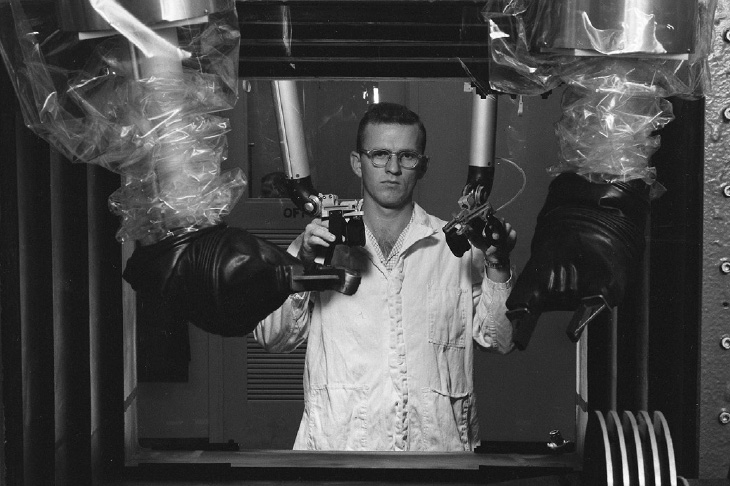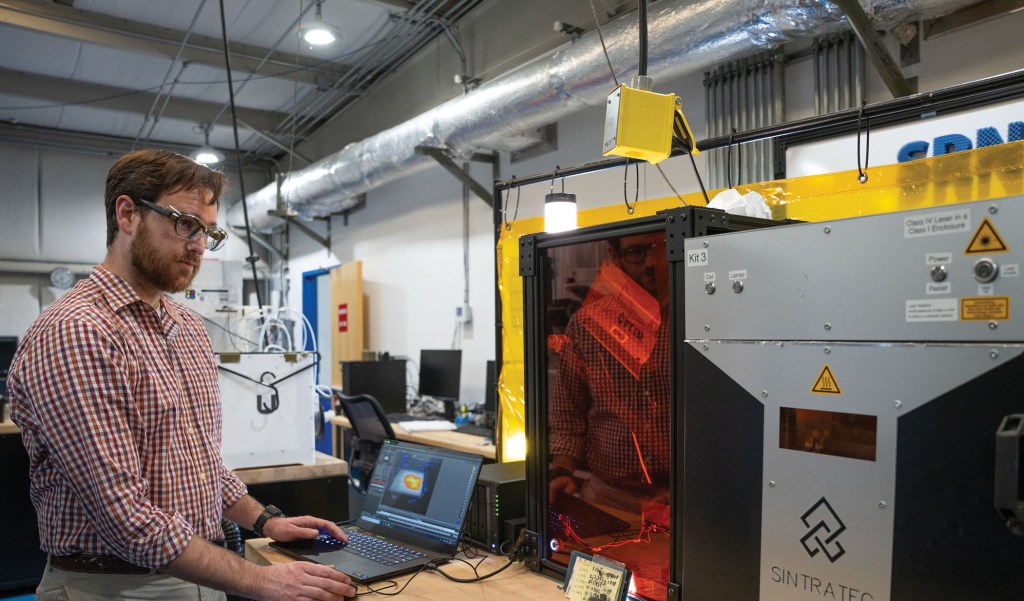SRNL’s Storied Past, Vibrant Present and Limitless Future

The High Level Caves (Shielded Cells) in the early 1960s. (SRS Archives DPSPF-8297-12)
In 2021, the Battelle Savannah River Alliance team began management and operations of the country’s premier environmental, energy, and national security research facility – the Savannah River National Laboratory. This marked an important transition of SRNL into an independent, national technical resource that is delivering excellence in science and technology, operations, and community engagement.
This newfound autonomy gave SRNL the feel of a start-up company, but it belied the fact that the lab had a storied, 70-year history. In the early 1950s, as the need for Savannah River Site (SRS) became apparent to expand the nation’s nuclear deterrent, the Atomic Energy Commission recognized the importance of a stand-alone, dedicated laboratory to support SRS operations. The DuPont company, which President Harry Truman asked to run the new plant, agreed with this assessment and requested the proposed lab not be included in the national laboratory system. The lab was given the title of Savannah River Laboratory.
Nuclear science for both defense and commercial applications was in its infancy. The processes for producing plutonium and tritium for nuclear weapons, especially on a large scale, were still being created. SRL’s talented engineers, chemists and nuclear scientists, some of whom had been part of the Manhattan Project, made great strides developing and improving them.
The 1950s and 1960s saw increased production of nuclear materials at SRS and significant advancements in the science behind it. SRL was at the heart of these primary mission activities. Nonetheless, while still not a national laboratory, SRL’s innovations and discoveries rivalled those from the national laboratory complex. SRL scientists supported the discovery of the neutrino by Clyde Cowan and Frederick Reines in 1956. During these years, SRL scientists also conducted groundbreaking work with rare elements (e.g., curium, californium) and played a major role in isotope science for the U.S. space program.
SRL continued to push the boundaries of nuclear science in the 1970s and 1980s, as well as develop novel processes for the treatment and storage of legacy waste from nuclear material production. Nuclear fuels were processed in the separations canyons. Advances and discoveries continued to be made in both fundamental research and advanced engineering and chemistry. In the late 1980s, recognizing the growing capabilities and evolving missions at SRL, the name was changed to Savannah River Technology Center. This reflected a greater emphasis on expanding the lab’s reach beyond the SRS boundaries.

The Additive Manufacturing Lab in 2023. SRNL (Laura Russo, SRNS)
And in 2004, SRTC’s title changed to reflect a much more prestigious designation. According to “Hot Labs/Cold War,” a 2022 history of SRNL:
The DOE recognized the core competencies of the SRTC in hydrogen technology, environmental remediation, nonproliferation and national security, and nuclear material stabilization. Acknowledging the importance of these areas to the nation, the SRTC was designated as a National Laboratory on May 7, 2004, and renamed the Savannah River National Laboratory (SRNL). This achievement was the culmination of the work of thousands of scientists, engineers, and technicians who innovated for over a half-century at the SRS and a recognition of the research potential of the Savannah River National Laboratory in nuclear stockpile, nuclear materials, and environmental stewardship.
In the 20 years since the designation SRNL has seen tremendous growth, with a goal of significantly expanding programs such as nonproliferation and tritium science. The Advanced Manufacturing Collaborative will soon open on the campus of the University of South Carolina at Aiken. Plans are also being made for a workforce development center.
In addition to work in nonproliferation, weapons production technology and environmental and legacy management, SRNL scientists are making new discoveries in clean energy. Applications for advancements in all these areas are plentiful throughout the nation and worldwide. Opportunities abound for technology transfer from SRNL research, and the number of patents and SRNL publications continues to grow each year.
SRNL is putting science to work and will continue to do so. As it protects our environment, secures our clean energy future, serves our national defense and reduces emerging nuclear threats, SRNL has a limitless future.
